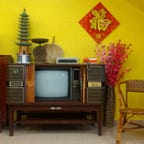The Chinese Tea Shop
(Kedai Cina Teh/Zhōngguó Chá Diàn)
Wandering on the streets (Jalan) of Malaysia, one would find innumerable food courts (Medan Selera)/Restorans) serving delicacies that are reflective of Negara Malaysia’s syncretic culture. While Food MNCs such as Nestle were successful in making Milo a preferred drink in this SE Asian country, Teh (Tea) continues to rule the hearts and minds of both urban and rural mass. Here, the British breakfast tea has already lost its ground to Teh Tarik (Pull Tea) (a variety of milk tea originated from India) and Teh-O (Black Tea) which are famous among its Chinese and local Indians alike. However, amid all this, there are few old Chinese Tea shops (kedai cina teh) that have preserved the ancient art of Chinese tea both green and puer (fermented) tea (Cha) and its ecosystems of procedures and utensils. The price and quality of the Chinese tea depend upon the age of the tea leaves, higher the age higher is their price.
In Chinese culture, tea drinking is taken seriously and is part of their family festivities. For example, in Chinese wedding ceremonies, there are rituals in which the newly-wed couples have to serve tea to their elders in a joint ceremony in the presence of their close family relatives and in which they receive âng-pau/hóngbāo in return as a blessing.
Tea making and drinking also form part of the philosophical development in Chinese culture. The types of teawares used and the elaborate preparation involved has its own history and meaning. It is said that Tea (Cha) if served well, will not only improve your mood but also will create an environment conducive for negotiation, strategy making and influencing people. Indian and Chinese tea are a world apart. While the former got it from China, the essence, style, and quantity of tea drinking in both countries are totally different. In the case of India, it is more about discussion (Charcha)/gathering while in China it is about self-cultivation and time for pre-ponderance with some room for sharing space with known people. Chinese consider tea drinking as part of good health and balance of energy within the body while Indians consider it as part of their delicacy and consume with a variety of snacks that is at time unhealthy in nature.
(Read more here)
